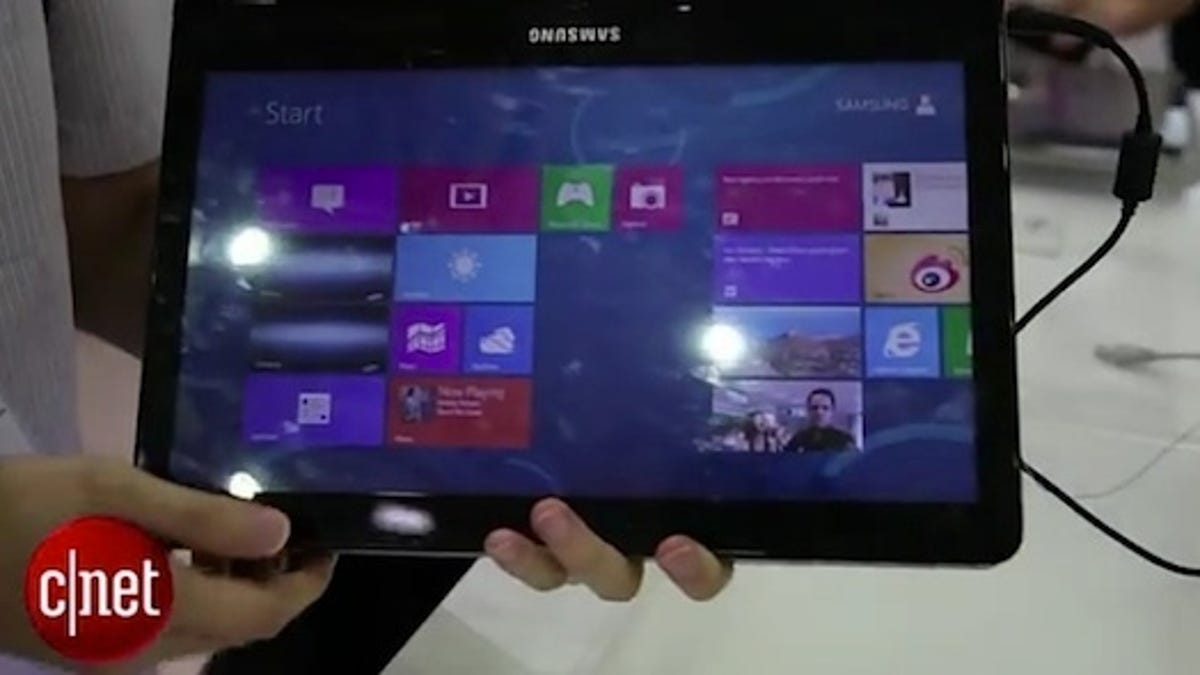Computex: Roundup of hottest Windows 8 devices, day 2
Computex roundup of hottest Windows devices includes Samsung's Series 5 ultrabook with a touch screen.

Device makers continue to concoct novel designs to take advantage of Windows 8 Metro interface.
On Tuesday at Computex in Taipei, Samsung showed a Series 5 ultrabook running Windows 8 with a 13.3-inch touch display.
Touch screens are pretty much de rigueur for future ultrabooks. Why? Aside from the fact that the Windows 8 Metro interface is all about touch, Intel marketing chief Tom Kilroy told CNET on Monday that the chipmaker is making a substantial investment in touch display manufacturers to ensure that a healthy supply of the screens are available in the coming months and years.
That means Intel and its device partners see touch as a standard feature for many, if not most, future ultrabooks.
Next up, Qualcomm's Snapdragon tablet running Windows RT (below) on top of a dual-core Snapdragon S4 chip rated at 1.5GHz. Basically, Qualcomm has taken development vehicle aimed originally at Android and slapped Windows RT on it.
When doing a hands-on first-look, CNET Asia said they hit a "snag" when the tablet was playing back a 1080p video. "Halfway into the clip, the reference unit suffered from a massive drop in frame rate, resulting in a stuttering video," CNET's Aloysius Low wrote.
That raises questions about Qualcomm's progress with Windows RT. At this point, we should be seeing an RT device from the likes of Hewlett-Packard that is close to commercialization. Maybe HP simply doesn't want to show its hand. But you have to wonder.
Next, the Gigabyte X11 ultrabook. Though not at Windows 8 device (at least not yet), at 2.1 pounds, the X11 is a novelty because it's about as close as an ultrabook can get to breaking into sub-2-pound tablet territory.
The 11.6er has a carbon-fiber chassis, another feature that relatively few ultrabooks have. Carbon fiber is very light but durable.
Other notable specs include Intel "Ivy Bridge" Core i5-3317U or i7-3517U processors, a 128GB SSD, a 1,366x768 display (non-touch), a mini-DisplayPort, a microSD slot, and two USB ports.
Toshiba is cautiously showing off Windows 8 stuff (below) at Computex, i.e., revealing no detailed specs. Those designs include a Windows 8 "ultrabook convertible" designed in partnership with Intel, a touch screen Windows RT clamshell PC designed in partnership with Texas Instruments, and a Windows RT tablet with keyboard dock designed in partnership with TI.

